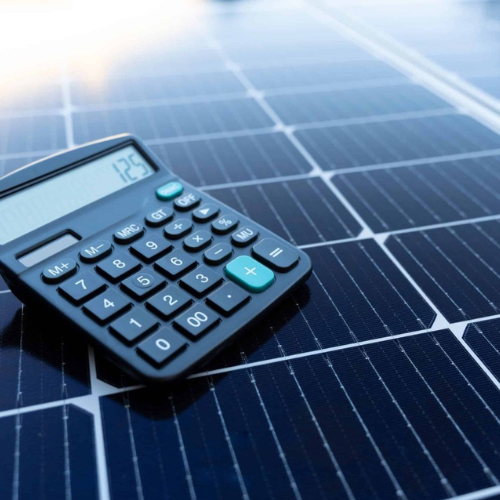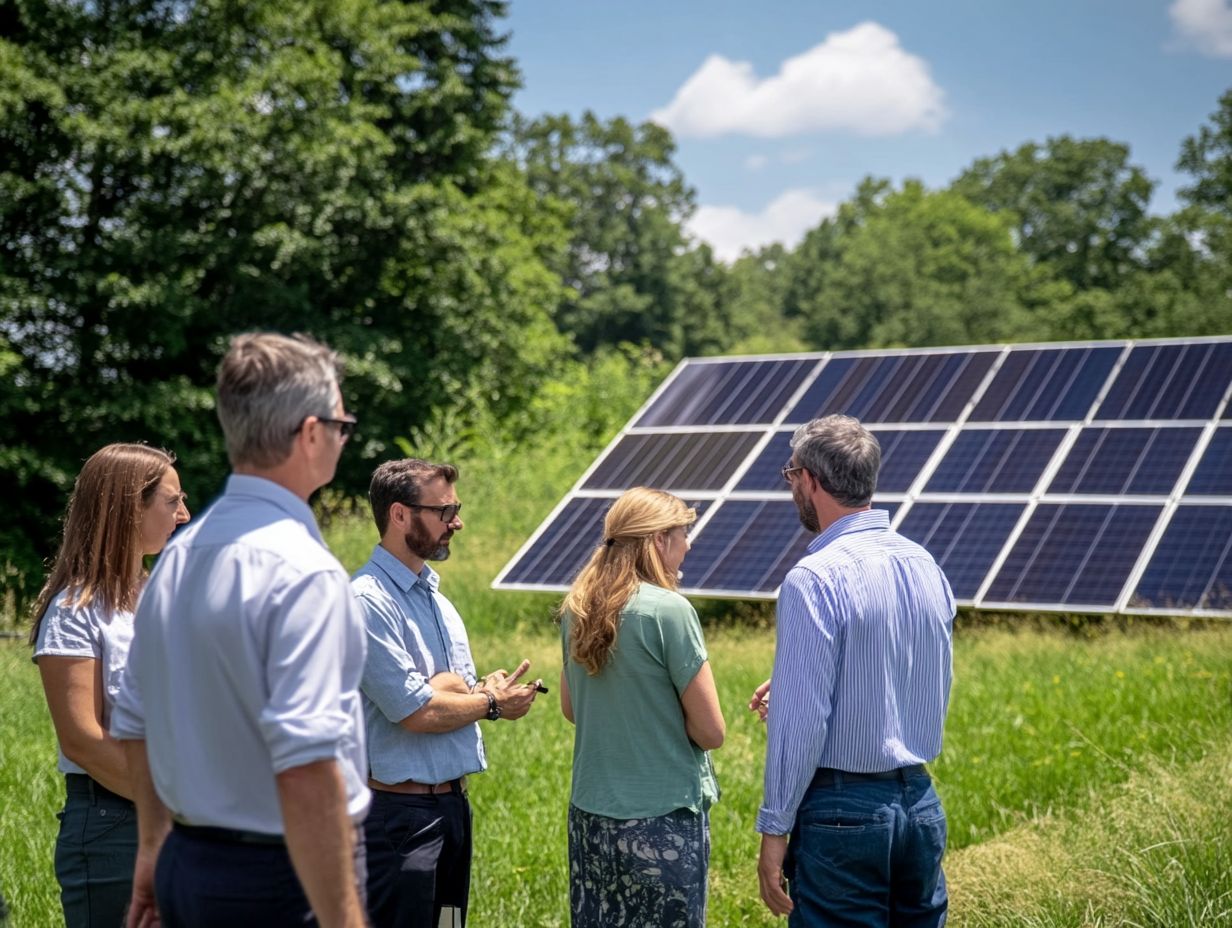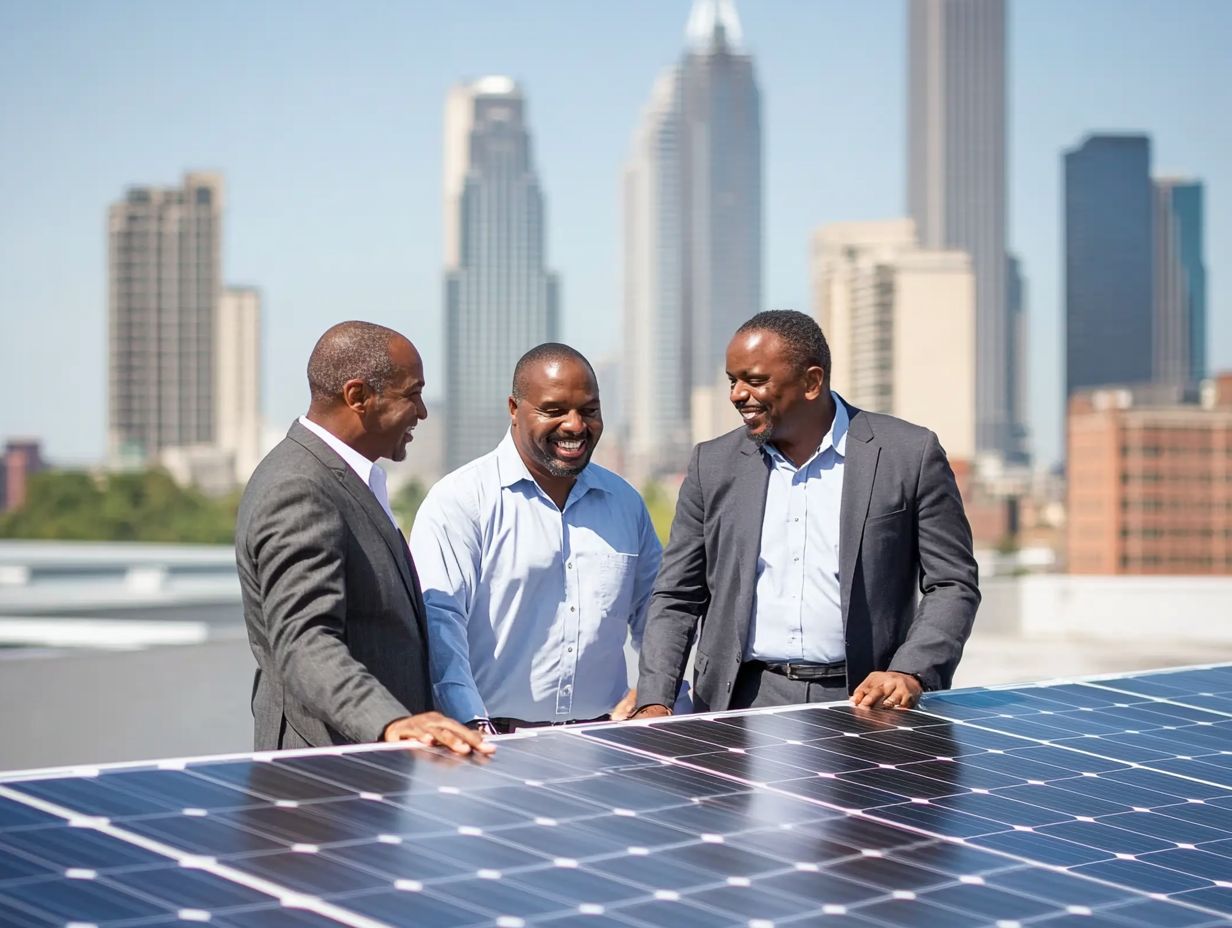Contents
- 1 Understanding Solar Energy
- 2 Key Benefits of Solar Energy
- 3 Types of Solar Energy Systems
- 4 Factors to Consider Before Installing Solar Energy
- 5 Installation Process for Solar Energy Systems
- 6 Maintaining and Monitoring Solar Energy Systems
- 7 Solar Energy: Frequently Asked Questions
- 7.1 Top 4 Reasons to Install Solar Energy
- 7.2 How does solar energy help with cost savings?
- 7.3 What are the environmental benefits of installing solar energy?
- 7.4 How does installing solar energy promote energy independence?
- 7.5 Will installing solar energy increase my home’s value?
- 7.6 What other benefits come with installing solar energy?
Understanding Solar Energy
As you look for sustainable energy solutions, solar energy really shines as a leading contender in the renewable resources market.
This guide will walk you through the many benefits of harnessing the sun’s power—from slashing your electricity costs to making a positive impact on the environment through carbon reduction and clean energy initiatives. You’ll get the lowdown on the different types of solar energy systems available, key factors to think about before you install anything, such as energy rates and legislative support, and handy tips for keeping your system running efficiently in the long run with proper maintenance.
You’ll soon see why solar energy, with its energy independence and financial incentives, is a smart choice for your home or business.
Green, M. A., Dunlop, E. D., Hohl-Ebinger, J., Yoshita, M., Kopidakis, N., & Hao, X. (2020). Solar cell efficiency tables (version 56). Progress in Photovoltaics: Research and Applications, 28(7), 629-638. Link
What is Solar Energy?
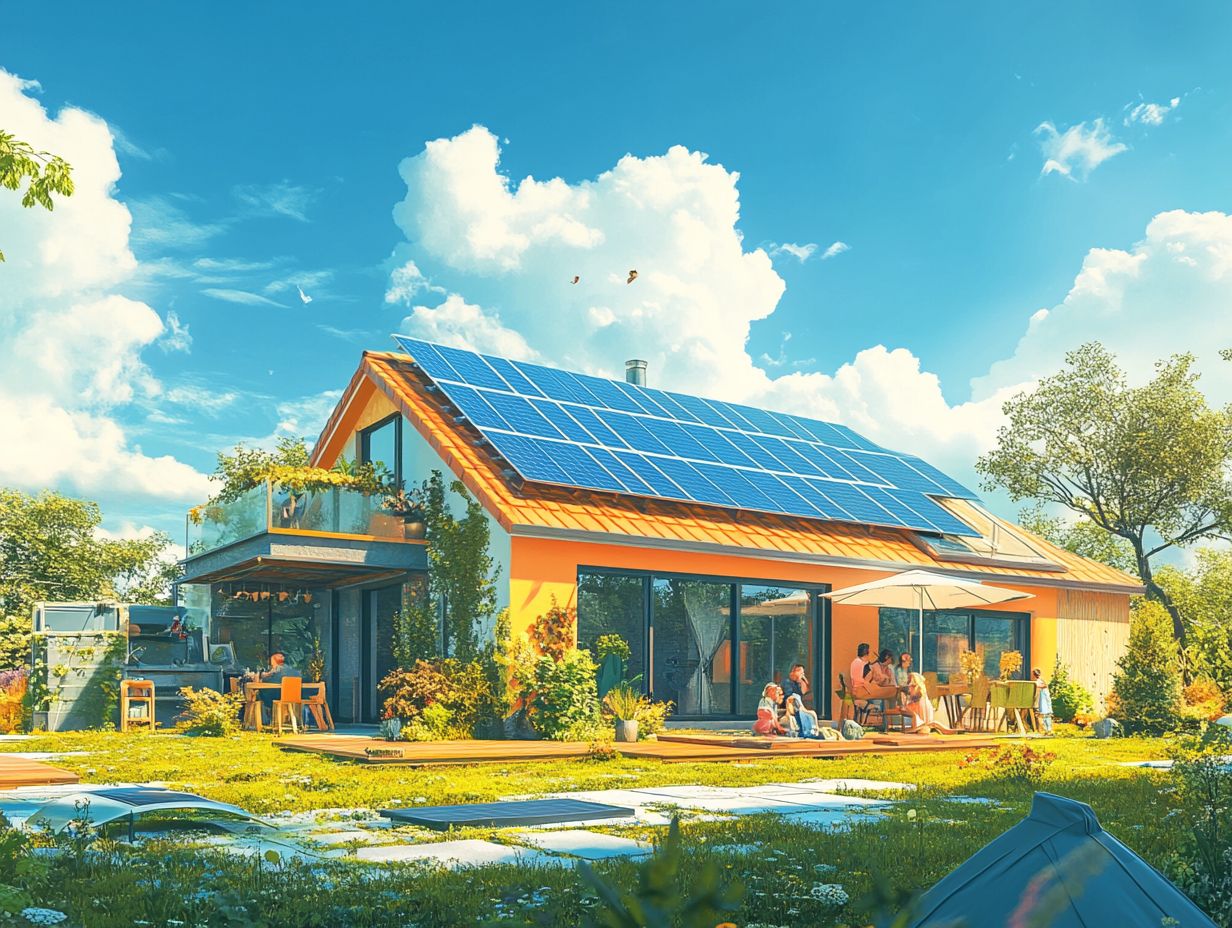
Solar energy is a fantastic form of renewable energy that comes straight from the sun’s rays, making it a key player in energy diversification. You can tap into this resource using various solar technologies, especially photovoltaic systems and solar arrays, which turn sunlight into electricity.
This clean energy source not only helps you slash your energy bills and achieve utility savings, but it also plays a vital role in moving us toward a more sustainable future with clean technology.
Photovoltaic systems work by using semiconductor materials that soak up sunlight, generating electricity through something called the photovoltaic effect, which is central to electricity generation in solar power systems. This tech is crucial because it allows both residential solar and commercial solar setups to create clean energy right on-site, cutting down on the need for fossil fuels and enhancing energy security.
As communities start embracing renewable energy and solar technology, they become more resilient against climate change, which is a serious threat to environments all over the globe. By adopting sustainable practices like using solar energy, you’ll not only boost your energy security but also engage in community solar efforts to create a healthier planet for generations to come.
Key Benefits of Solar Energy
The benefits of solar energy are countless, including environmental impact and cost savings, making it a popular choice for both residential solar and commercial use.
When you invest in solar energy systems, you’ll see reduced electricity costs, significant energy savings through efficient energy consumption, and a positive impact on the environment that helps fight climate change. Plus, you’ll love the energy independence that comes from generating your own clean energy and the potential increase in home value.
There are also plenty of solar incentives, government rebates, and solar tax credits out there to make your transition to solar even more affordable.
Reduced Electricity Costs
One of the best reasons for you to think about solar energy is the chance to cut down on your electricity costs, which can lead to some serious savings over time. By installing solar panels, you can start generating your own electricity, effectively lowering your energy bills and even raking in credits through net metering when your system produces more energy than you use, enhancing your return on investment.
This not only helps ease the financial strain of soaring energy prices but also boosts the overall return on investment for your solar setup, thanks to efficient energy production and performance.
The way solar panels work means you could recoup your initial investment in just a few years, especially if you live in a sunny area where solar energy output is maximized. Take homeowners in California, for example. They’ve reported saving more than $1,000 a year on their electricity bills after making the switch to solar, which highlights the substantial long-term savings.
With net metering, they get paid for the excess power they send back to the grid, which adds even more financial perks and enhances grid resilience.
Real-life examples from different households show that many not only break even on their investment in a short timeframe but also enjoy significant savings down the line, making solar power an increasingly appealing choice for savvy consumers like you who value eco-friendly energy solutions.
Environmental Impact
The environmental impact of solar energy is overwhelmingly positive, especially because it can drastically reduce pollution and lower your carbon footprint. By swapping out fossil fuels for clean energy sources like solar power, you’re actively doing your part to cut down on pollution, lower your carbon footprint, and fight climate change.
In conclusion, embracing solar energy is essential for a sustainable future, benefiting both your finances and the environment.
Embracing solar energy not only benefits the planet but also encourages sustainable technology, energy efficiency, and solar innovation across different sectors.
In fact, when you use solar energy systems, they produce little to no emissions during operation, supporting environmental benefits and eco-consciousness. This means you’re significantly reducing the overall greenhouse gases released into the atmosphere, aligning with energy policy goals for a cleaner environment. Making this switch away from conventional energy sources not only improves air quality but also helps tackle the negative effects of climate change, like extreme weather and rising sea levels, through strategic energy transition.
By harnessing solar energy, you’re also supporting eco-friendly job creation, energy strategy, and sparking innovation in green technology, paving the way for a more sustainable future.
All of these efforts are crucial for advancing global initiatives to protect the environment, promote energy sustainability, and preserve natural resources for generations to come.
Tax Incentives and Rebates
Tax incentives and rebates really make solar energy a lot more accessible and affordable for you, whether you’re a homeowner or running a business, by significantly lowering installation costs. There are various government programs out there that offer solar energy tax credits and rebates, which can lead to substantial savings, supporting energy management and financial planning. These financial incentives not only encourage you to go green but also boost your overall return on investment by making financing solar energy a more attractive option through attractive financing options.
One of the most common incentives is the federal solar tax credit, also known as the Investment Tax Credit (ITC). This lets you deduct a significant percentage of your installation costs from your federal taxes, which is pretty sweet. Some states even offer their own rebates or performance-based incentives, enhancing the overall financial incentives available.
For example, California has the SGIP program, which gives you financial support based on how much energy you generate, contributing to energy accessibility and community engagement.
Keep in mind that eligibility for these incentives can vary depending on where you are, with some regions offering more favorable conditions than others. This can definitely impact your decision on whether to invest in solar technology, since a good incentive structure can lead to quicker returns, lower upfront costs, and increased public awareness.
Types of Solar Energy Systems
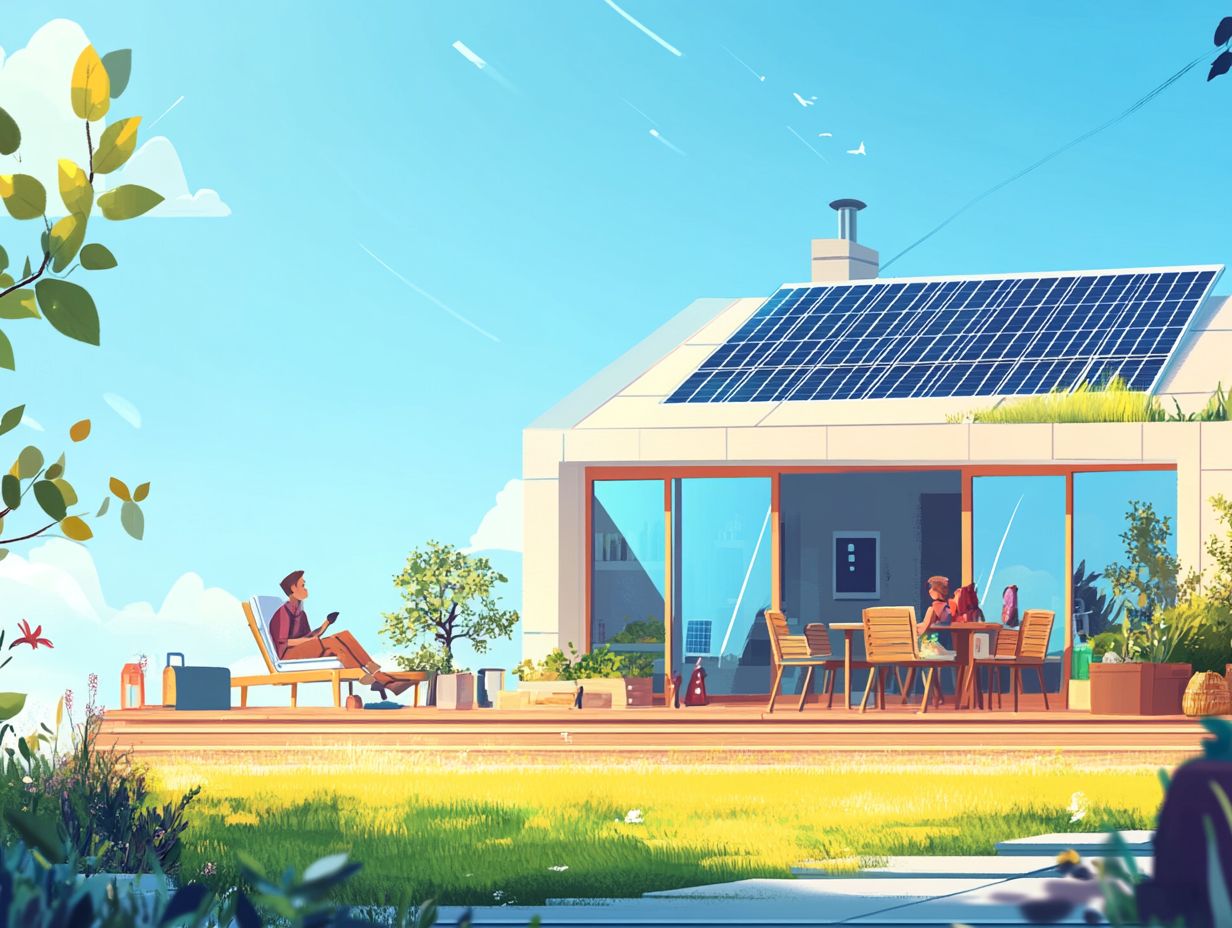
When you’re looking into solar energy, it’s important to grasp the different types of solar energy systems out there, including grid-tied systems and off-grid systems, as they cater to your specific energy needs and preferences.
You can generally categorize these systems into on-grid and off-grid options, and each comes with its own perks and uses.
Plus, within those categories, you’ve got a range of solar panel choices like monocrystalline, polycrystalline, and thin-film technologies, all tailored to maximize energy production and efficiency based on where you live and what fits your budget.
On-grid vs. Off-grid Systems
Choosing between on-grid and off-grid solar energy systems is a big deal because it shapes how you’ll use and rely on solar energy for your needs.
With on-grid systems, you’re connected to the electricity grid, which means you can save on energy costs through net metering and benefit from energy transition strategies. On the other hand, off-grid systems give you complete energy independence by using energy storage solutions, like batteries and inverters, to keep the power flowing during outages. Each option has its advantages, tailored to your lifestyle, energy needs, and investment in solar technology.
On-grid systems make it super easy to harness solar energy while still having access to traditional grid power, facilitating energy diversification. This way, you have a steady supply of electricity, even if your solar production takes a dip, ensuring energy resilience. Plus, you can slash those electricity bills and even sell any excess energy back to the grid through net metering, enhancing your return on investment and financial security.
Now, if self-sufficiency is more your style, off-grid systems are where it’s at—especially for those living in remote areas or anyone looking to minimize their reliance on public utilities and foster energy security. With effective energy storage and battery storage solutions, these systems can tap into the solar energy they’ve collected during sunny days, ensuring you have a reliable power supply no matter what Mother Nature throws your way.
Types of Solar Panels
When you’re picking solar panels for your energy system, you’ve got a bunch of options to consider, each with its own quirks, efficiencies, and efficiency ratings. Monocrystalline panels are the high achievers, known for their impressive efficiency, sleek design, and high performance. On the flip side, polycrystalline panels are usually easier on the wallet but come with slightly lower efficiency rates, making them a balanced choice for energy output.
If you’re looking for something flexible and lightweight, thin-film solar technology might be right up your alley, making it a solid choice for both residential and commercial setups, supporting energy diversification.
Your choice really boils down to your specific energy needs, the space you have available, and what your budget looks like, factoring in potential home value increase and market trends. Monocrystalline panels, while pricier, are fantastic performers in low sunlight conditions, making them a smart pick for urban areas where roof space is tight and energy alternatives are sought.
Meanwhile, polycrystalline panels could be more attractive for larger installations where saving costs can make a big difference in your overall budget, supporting sustainable practices.
And let’s not forget about thin-film solar panels—they’re gaining traction for innovative uses like building-integrated photovoltaics and solar innovation projects. As technology keeps advancing, their efficiency and performance are improving, paving the way for more people to embrace solar energy solutions and participate in solar community programs.
Factors to Consider Before Installing Solar Energy
Before you jump into solar energy installation, it’s a good idea to think about a few key factors that could affect your decision and the success of your solar system, such as energy policy and reputable installers.
Certainly, the installation cost is a significant factor, but don’t forget to consider the location and climate of your property, as these impact energy output and sustainability. These can really impact how much energy your system produces, its efficiency over time, and your long-term savings.
Additionally, understanding potential maintenance costs and your expected return on investment is crucial for energy management and strategic planning. You want to make sure your solar panel system aligns with both your energy needs and financial goals, ensuring a sustainable energy future.
Location and Climate Considerations
The location and climate of your property are key factors in how well your solar energy system, incorporating solar panels and energy storage, will perform.
Understanding how geography impacts solar performance can really help you make smarter choices. For example, if you live closer to the equator, you’ll likely enjoy more consistent sunlight year-round, which means your solar panels can really shine, enhancing electricity generation and efficiency.
On the flip side, if you’re in an area with brutal winters or seasonal changes, you might need to invest in equipment that can handle those extreme temperatures. When planning your solar installation, it’s a good idea to take a close look at local weather patterns, average sunlight exposure, and potential energy storage solutions.
Utilizing tools such as solar maps or local weather data can give you a clearer picture of the potential solar gain across different seasons. This info can guide you in choosing the right solar panels and help you position the installation for maximum sun exposure, optimizing performance and energy output.
Cost and Return on Investment
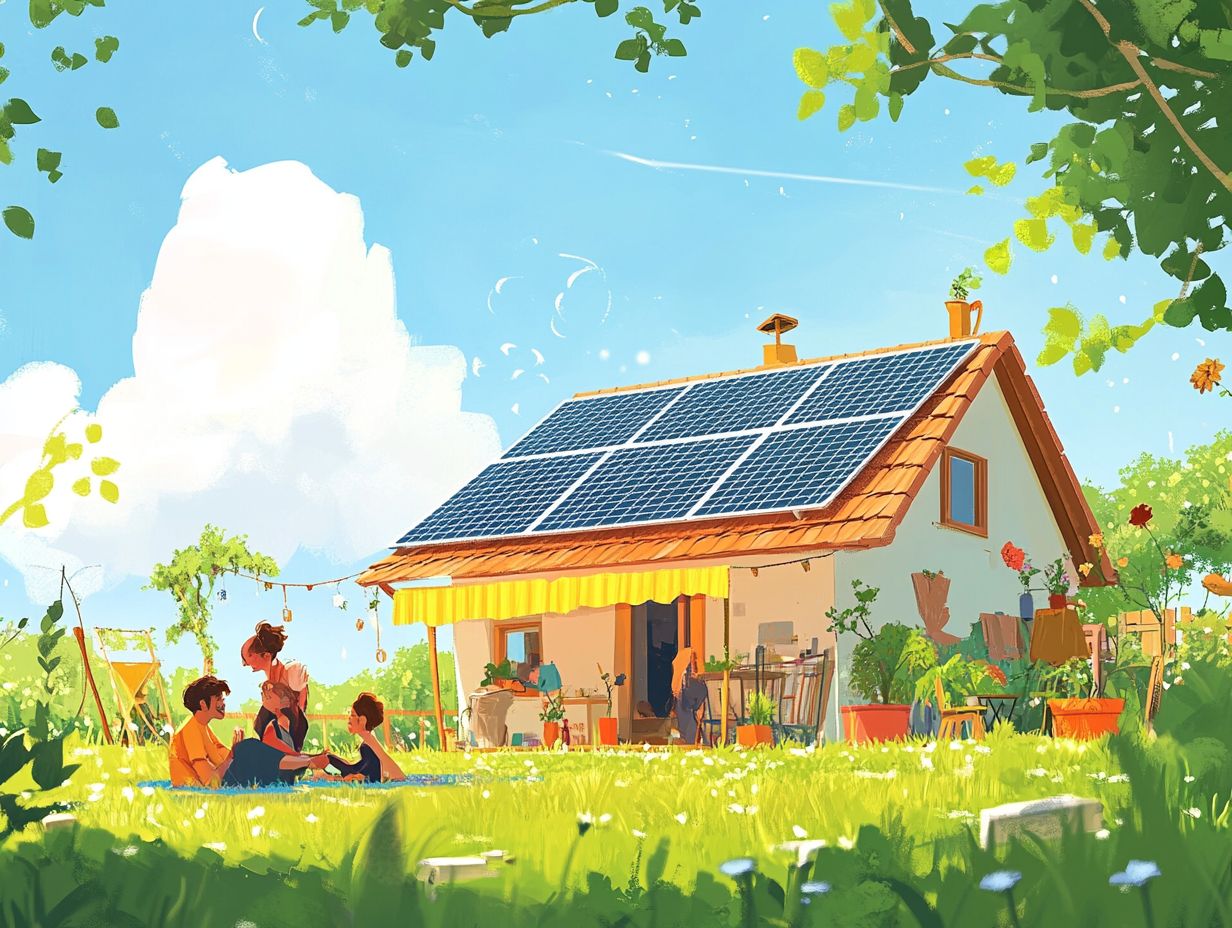
Understanding the cost of installation and the expected return on investment is crucial when you’re thinking about solar energy for your home or business. Sure, those initial installation costs can feel like a hefty hurdle, but the long-term savings from lower energy bills and various solar incentives, including solar tax credits and government incentives, can really make the numbers work in your favor.
Don’t forget to factor in potential maintenance costs, too; they’ll help you figure out how affordable a solar energy system truly is. This allows you to consider both renewable energy benefits and financial incentives, so you can make a well-informed decision.
The installation costs can vary quite a bit based on several factors, like the size of the system you decide on, your specific location, and the technology you choose—whether that’s photovoltaic panels or solar thermal systems, highlighting the importance of solar technology and clean energy. For example, bigger systems might require a larger upfront investment, but they usually lead to more significant savings down the line.
Local regulations, state incentives, and even your climate can affect pricing and how well the system performs.
So, it’s important to calculate your return on investment not just by looking at immediate savings but also over the entire lifespan of the system. This includes maintenance costs, energy efficiency ratings, and potential repairs. By doing this, you’ll get a clearer picture of the economic benefits that come with going solar and contributing to environmental impact and energy sustainability.
Installation Process for Solar Energy Systems
The installation process for solar energy systems is crucial for maximizing overall energy savings. It involves several key steps that you need to follow to successfully integrate it into your home or business.
It starts with assessing your energy needs and picking the right solar technology, whether for residential solar or commercial solar projects. After that, you’ll need to obtain the necessary permits and finalize the installation. Each of these stages is crucial for keeping your solar project on track and ensuring its success through efficient renewable energy integration.
By understanding this process, you can better prepare for the transition to renewable energy and make the most of your solar power benefits, including eco-friendly practices and energy independence.
Steps and Timeline
When you’re diving into a solar energy project, it’s crucial to understand the steps involved and the expected timeline. This will help you plan and implement everything effectively, ensuring the adoption of sustainable practices and clean technology.
Usually, the installation process kicks off with an initial consultation, then moves on to a site assessment, design planning, and finally, the actual installation of your solar panels, which may include grid-tied systems or off-grid systems. Depending on how complex the project is and what local regulations you’re dealing with, the whole process can take anywhere from a few weeks to several months.
Several factors can affect the timeline, like weather conditions, permit approvals, and material availability. So, make sure you account for potential delays caused by these variables, which can impact energy consumption and solar energy growth, to keep your expectations in check.
Choosing reliable solar energy companies is key; it can really impact how smoothly your project runs. Look for firms that have solid reputations in your area, check out verified customer reviews, and ensure they offer good warranty options, along with expertise in solar system components like inverters and battery storage.
Working with professionals who know the ins and outs of both installation and local regulations will help ensure your project goes off without a hitch, giving you peace of mind throughout the whole process and supporting grid resilience and community solar initiatives.
Maintaining and Monitoring Solar Energy Systems
Keeping an eye on and maintaining your solar energy systems is key to making sure they run efficiently and perform at their best over the long haul, which contributes to energy security and long-term savings.
Sure, regular maintenance might come with some costs, but it can save you from bigger headaches down the line and help your solar panels last longer.
By putting in place some solid monitoring strategies and tracking your energy production, you can really amp up your energy savings and make sure your solar installation continues to shine bright, utilizing sustainable practices and enhancing energy accessibility.
Tips for Long-term Efficiency
To make sure your solar energy systems are running efficiently for the long haul, there are some key maintenance tips you should follow.
It’s a good idea to clean the solar panels at least twice a year, or even more often if you live in an area that gets heavy rainfall or goes through seasonal changes that bring in a lot of dirt and debris, to maintain efficiency and support energy transition.
Don’t forget to inspect the inverter and wiring every six months; this is crucial for catching any connections that might have loosened over time.
Regularly monitoring your system’s performance through online platforms or mobile apps can help you spot energy production trends and detect any irregularities quickly.
And if you have access to dedicated technical resources or professional maintenance services, that can really boost the longevity and effectiveness of your solar energy systems, ensuring they operate at peak efficiency for many years to come, fostering eco-consciousness and energy sustainability.
Jordan, D. C., & Kurtz, S. R. (2013). Photovoltaic degradation rates—an analytical review. Progress in Photovoltaics: Research and Applications, 21(1), 12-29. Link
Solar Energy: Frequently Asked Questions
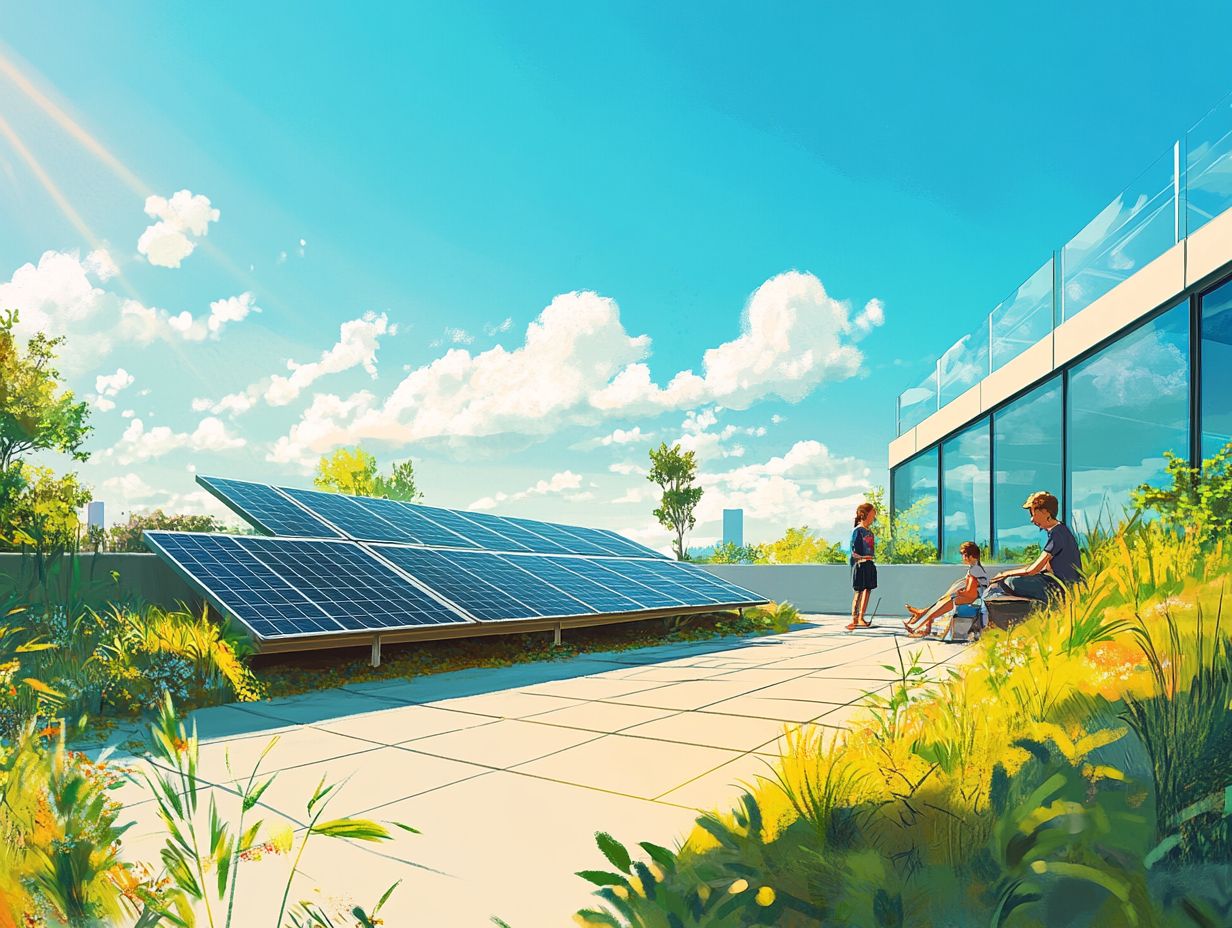
Top 4 Reasons to Install Solar Energy
The 4 best reasons for installing solar energy are: cost savings, environmental benefits, energy independence, and increased home value.
How does solar energy help with cost savings?
Solar energy systems can significantly reduce your monthly electricity bills by generating your own clean and renewable energy. This means you will be less reliant on your utility company and can potentially eliminate your electricity costs entirely.
What are the environmental benefits of installing solar energy?
Solar energy is a clean and renewable source of energy that produces no harmful emissions or pollution. By using solar energy, you can reduce your carbon footprint and help combat climate change.
How does installing solar energy promote energy independence?
With solar energy, you are no longer dependent on the grid for electricity. This means you can still have power during outages and emergencies, giving you more control over your energy usage and costs.
Will installing solar energy increase my home’s value?
Yes, installing solar energy can increase your home’s value significantly. Many homebuyers are willing to pay a premium for homes with solar energy systems, as they see it as a valuable and desirable feature that can save them money in the long run.
What other benefits come with installing solar energy?
In addition to cost savings, environmental benefits, energy independence, and increased home value, installing solar energy can provide state and federal tax incentives and rebates. It can also help you become more self-sufficient and reduce your reliance on fossil fuels.


